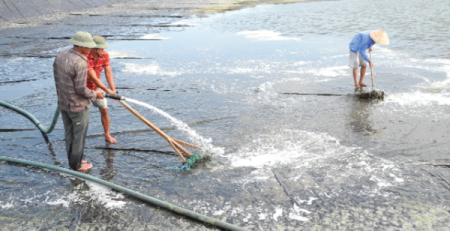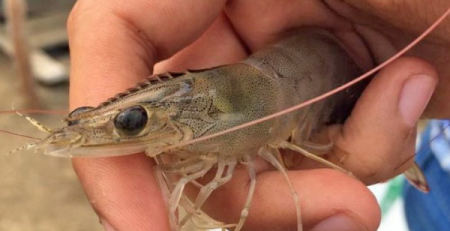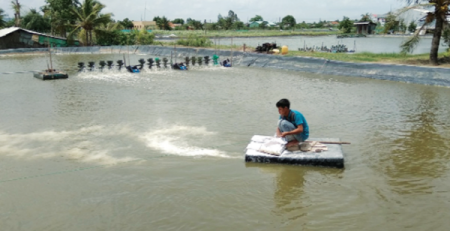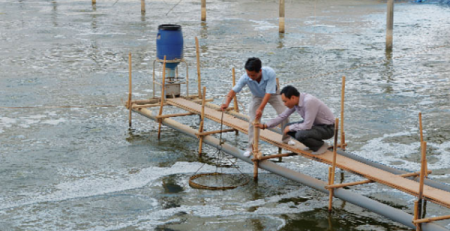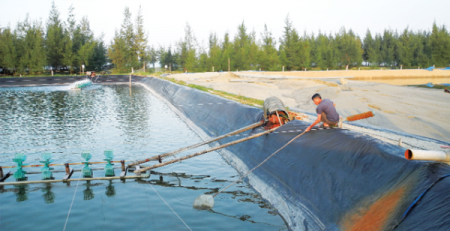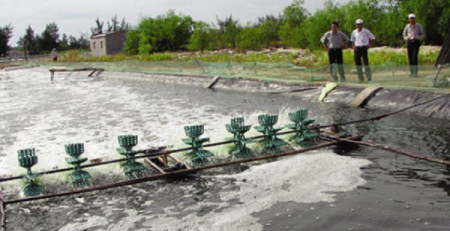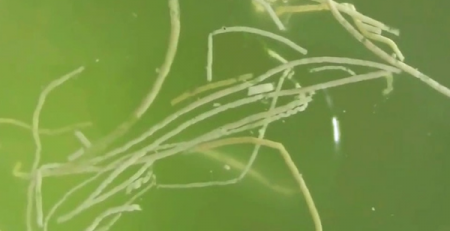Krill – Super raw material for shrimp
Antarctic Krill, a type of crustacean floating in the ocean often swim in herds is receiving the attention of many aquaculture companies with progressive thinking. Krill powder has been shown to improve productivity and resistance without increasing shrimp farming costs.

Krill is often concentrated in large, dense groups
Nội dung bài viết [ẩn]
Protein sources and natural nutrients
Krill (Euphausia superba) is a small shrimp with big black eyes, a pale red shell and almost transparent. While the length is only about 6 cm, the krill is often concentrated in large, densely packed clusters stretching for kilometers. Krill is one of the largest biomass species on the planet, estimated at 500 million tons. The Euphausia superba is an overwhelming amount of krill in icy cold waters of the Southern Ocean that surrounds Antarctica. Krill uses specialized filtration systems on the front legs to get the algae virus food. Thanks to this food, krill is rich in phospholipids combining omega-3 acids. Therefore, krill is an ideal source of omega-3 for the current shrimp industry.
After being exploited in the wild, the producer will produce kill powder from the extract of the whole Antarctic krill, then make the ripening and drying. Krill powder is orange-yellow in light brown color, contains 60% protein with a perfectly balanced amino acid content. As a result, krill powder is an ideal food ingredient, suitable for many different cultured shrimp species.
Why do shrimps like to eat krill?
Many different attractants are often used to stimulate shrimp appetite. The krill powder itself is a natural attractant, as a chemical stimulant that increases the feeding time of shrimp. Thanks to the crust rich in chitin and soluble compounds like trimethylamine oxide, krill also contains free amino acids and nucleotides such as proline, glycine and glucosamine. This combination is completely natural in all Antarctic krill species and has been shown to increase appetite and appetite for foods, especially in diets low in fish meal.
The need to cut fishmeal in aqua feed has been increasing since the supply of fish meal is scarce and the aquaculture industry has developed constantly. Replacing fishmeal with dried beans is likely to increase costs and does not guarantee sustainability. However, the difference in nutrient composition, factors that reduce appetite and nutritional resistance of beans can also reduce growth performance. This can be overcome by adding krill powder to food.
For example, just adding 2% of krill to 7.5% of fishmeal can ensure white shrimp gain similar growth when fed 20% of fishmeal. Thanks to containing 25% fat and 58% protein, Antarctic krill can replace fish meal, fish oil and plant lecithin or cholesterol without affecting the end body weight of shrimp. Krill powder feed attractants have been shown to improve the growth performance of shrimp when fed diets containing less fishmeal or only vegetable protein.
Outstanding growth
Among the many commonly used stimulants in shrimp feed (betaine, hydrolysates, squid and crustaceans), crustaceans and krill powder have been shown to be most effective in promoting shrimp feed intake. black tiger A six-week growth trial showed that the adult-grown shrimp grew faster than 20% if supplemented with 5% krill powder (Smith et al, 2005).
Adding krill powder to the diet also increased the amount of food pellets that white leg shrimp eat (Derby et al, 2016). Specifically, adding 6% of krill powder to food significantly increased intake by 29% within an hour. After 3 hours, the addition of 6% krill powder increased feed consumption by 69% compared to the control group.
Overcoming stress factors
In fact, osmotic pressure makes shrimp grow more slowly, the rate of poor feed conversion and lower survival rate. Few doubts that natural omega-3 phospholipids in krill play an extremely important role in osmotic pressure regulation.
Shrimp depend on diets containing phospholipids, especially in the larval and adult stages to build cell membranes, lipid digestion, lipoprotein plasma transport and intercellular information. Phospholipids are particularly important for shrimp growth because they enhance resistance to stress factors such as low oxygen, molting, rapid changes in water temperature or high salinity.
Omega-3 phospholipids in krill powder can ensure that fats (cholesterol and triglycerides) are effectively emulsified, digested and accumulated in the hepatopancreas to be ready for use when needed. Many studies have shown that, thanks to the accumulation of energy, fat can be transported promptly to tissues. This is an important factor to help shrimp overcome changes that can cause stress from the environment.
Astaxanthin antioxidants in krill oil also minimize the effects of salinity by improving the ability to regulate osmotic pressure and growth performance. This has been demonstrated in a 9-week trial comparing 3 sources of fat (Castro et al, 2017). Results showed that shrimp fed diets containing legumes or fish meal were slower than shrimp fed krill astaxanthin oil. In the same culture environment with higher salinity, the shrimp group supplemented with krill astaxanthin oil reached a higher end body weight than the group that ate dried beans and fish meal.
Obviously, farmed shrimps like to eat krill. In the diet containing less fish meal, krill powder increases the attractiveness of food and improves shrimp growth. As a result, shrimp grow fast and reach high yields, meaning that the farming cycle is shortened and fast shrimp reach more commercial sizes.
Source: contom.vn


